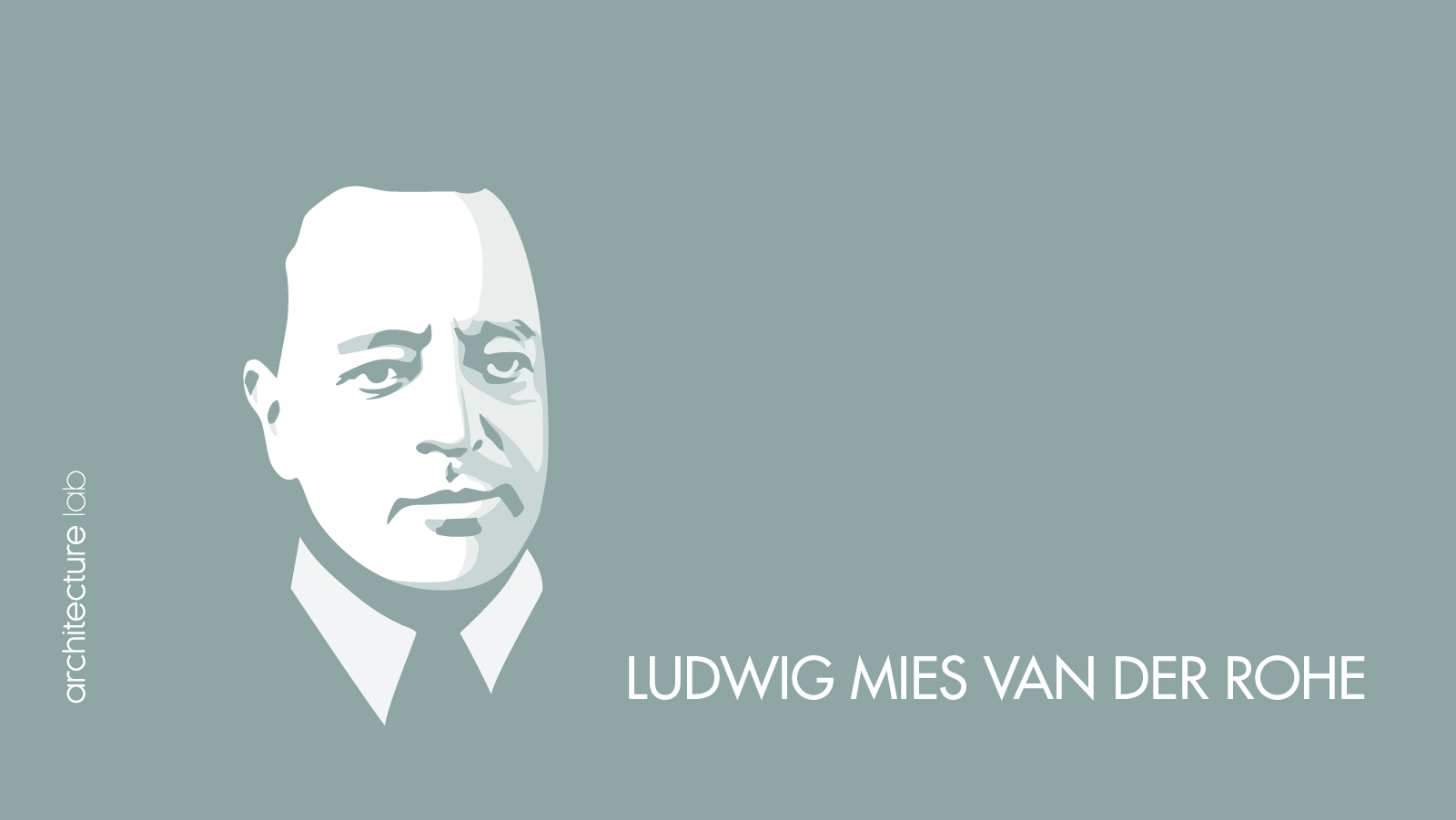A residential architect is a professional who designs and plans houses and residential buildings. They work closely with clients to understand their needs and preferences and create functional and aesthetically pleasing designs. To develop practical and safe living spaces, residential architects consider space utilization, building codes, and construction materials. They may also guide interior layout, lighting, and other elements contributing to a comfortable and efficient home. The types of buildings that Residential architects commonly design are single-family homes, townhouses, apartment complexes, and condominiums. They specialize in creating livable and functional spaces for individuals and families. These types of buildings are designed to provide private and comfortable living environments that meet the specific needs and preferences of the residents. The best residential architects in history are Frank Lloyd Wright, Tadao Ando, and Zaha Hadid. Frank Lloyd Wright was an American architect who pioneered the Prairie School and organic architecture movements. He designed over 1,000 structures, including many iconic houses such as Fallingwater, the Robie House, and the Solomon R. Guggenheim Museum. He is widely regarded as one of the greatest architects of the 20th century and influenced generations of architects worldwide. Tadao Ando was a Japanese architect known for his minimalist and concrete designs that created a sense of harmony between nature and humans. He designed many residential projects, including the 4×4 House, the Koshino House, and the Azuma House. He also received the Pritzker Prize, the Praemium Imperiale, and the RIBA Gold Medal. Zaha Hadid was a British-Iraqi architect who was the first woman to receive the Pritzker Prize, the highest honor in architecture. She was famous for her neo-futuristic designs that featured dynamic curves, geometric shapes, and expressive forms. Some of her residential works include the Capital Hill Residence, the One Thousand Museum, and the Galaxy SOHO. She also received the Stirling Prize, the RIBA Gold Medal, and the Praemium Imperiale.
1. Frank Lloyd Wright
Frank Lloyd Wright was an American residential architect, designer, writer, and educator who designed more than 1,000 structures over a creative period of 70 years. He pioneered the Prairie School and the Usonian movement and received several awards, including the RIBA Gold Medal and the AIA Gold Medal. Wright’s architecture was influenced by his belief in organic architecture, which sought to create harmony between human structures and the natural environment. He used local materials, open floor plans, horizontal lines, and geometric shapes to create innovative and functional buildings that blended with their surroundings. He also designed many of the interior elements of his buildings, such as furniture, stained glass, and textiles.

Wright was born on June 8, 1867, in Richland Center, Wisconsin. He grew up in Wisconsin and Illinois, where he loved nature and architecture. He studied civil engineering at the University of Wisconsin and then apprenticed in Chicago with Joseph Lyman Silsbee and Louis Sullivan. He opened his practice in 1893 and established a studio in his Oak Park home in 1898. He later moved to Wisconsin, Arizona, and New York, where he built his homes and studios: Taliesin, Taliesin West, and Taliesin East. He died on April 9, 1959, in Phoenix, Arizona, U.S. Wright is considered a legend in architecture because of his originality, creativity, and influence. He is widely regarded as one of the greatest architects of all time and one of the most important figures of 20th-century culture. He changed the course of American architecture and inspired generations of architects worldwide. His works have been recognized as national and world heritage sites and have received numerous awards and honors. He also wrote several books and articles and gave lectures and interviews that expressed his vision and philosophy.
Wright’s education was mostly informal and self-directed. He did not complete a formal degree in architecture but learned from his mentors, colleagues, and travels. He also established his school of architecture, the Taliesin Fellowship, where he taught his apprentices and students his principles and methods. He also learned from his experiments, experiences, and interactions with his clients and critics. He was always curious, open to new ideas and challenges, and constantly sought to improve his skills and knowledge.
2. Le Corbusier
Le Corbusier pioneered modern architecture as a Swiss-French residential architect, designer, painter, urban planner, and writer. He was born in 1887 in La Chaux-de-Fonds, Switzerland, and became a French citizen in 1930. He died in 1965 in Roquebrune-Cap-Martin, France. He is widely regarded as one of the greatest architects of the 20th century and one of the most influential figures of modern culture. Le Corbusier was a visionary architect who combined functionalism and sculptural expressionism in his designs. He sought to create harmony between human structures and the natural environment, using local materials, open floor plans, horizontal lines, and geometric shapes. He also designed many of the interior elements of his buildings, such as furniture, stained glass, and textiles. Various sources, such as nature, art, mathematics, and science, inspired him.

Le Corbusier did not have a formal degree in architecture but learned from his mentors, colleagues, and travels. He studied mathematics at the American University of Beirut and architecture at the Architectural Association School of Architecture in London. He worked with Joseph Lyman Silsbee and Louis Sullivan in Chicago and Rem Koolhaas and Elia Zenghelis in the Office of Metropolitan Architecture in Rotterdam. He opened his practice in 1980 and established his school of architecture, the Taliesin Fellowship, where he taught his principles and methods. Le Corbusier designed over 1,000 structures in over 40 countries, many of which have become iconic landmarks and cultural symbols. Some of his most famous works include the Villa Savoye in Poissy, France, the Notre Dame du Haut in Ronchamp, France, the Unité d’Habitation in Marseille, France, the Capitol Complex in Chandigarh, India, and the National Museum of Western Art in Tokyo, Japan. He also designed several unbuilt or unfinished projects, such as the Peak in Hong Kong, the Cardiff Bay Opera House in Wales, and the Tokyo Olympic Stadium in Japan.
Le Corbusier contributed to the field of architecture by introducing new forms, techniques, and concepts that challenged the conventional and the static. He used advanced digital technologies, such as computer-aided design and fabrication, to create complex geometries expressing movement and fluidity. He also experimented with different materials, such as concrete, steel, glass, and composite, to create expressive and sculptural structures that integrated with their environment. He was a founding member of the Congrès International d’Architecture Moderne (CIAM) and a leader of the modern movement. He changed the course of architecture and inspired generations of architects worldwide.
3. Ludwig Mies van der Rohe
Ludwig Mies van der Rohe was a German-American residential architect, academic, and interior designer. He was one of the pioneers of modern architecture and the International Style, a movement that emphasized simplicity, functionality, and rationality in design. He was also the last director of the Bauhaus, a famous school of art, design, and architecture in Germany. Mies was born in Aachen, Germany, in 1886. He started his career as a stone carver in his father’s shop and then worked as an apprentice for several architects, most notably Peter Behrens. He did not receive any formal education in architecture but learned by practice and self-study. He moved to Berlin in 1905, establishing his office and becoming involved in the avant-garde cultural scene. He changed his name from Maria Ludwig Michael Mies to Ludwig Mies van der Rohe, adding his mother’s maiden name and the Dutch prefix “van der” to create a more distinguished and international identity.

Ludwig Mies van der Rohe designed many innovative and influential buildings in Europe and America. Some of his most famous works include the Barcelona Pavilion (1929), a minimalist and elegant structure that was built for the International Exposition in Spain; the Tugendhat House (1930), a modernist villa in Brno, Czech Republic, that featured a large glass wall and an open floor plan; the Farnsworth House (1951), a steel and glass house in Illinois, USA, that was raised above the ground and surrounded by nature; the Seagram Building (1958), a skyscraper in New York, USA, that was one of the first examples of the curtain wall and the use of bronze as a material; and the New National Gallery (1968), a museum in Berlin, Germany, that consisted of a transparent glass box supported by a steel frame. Ludwig Mies van der Rohe contributed to the development of architecture in many ways. He introduced new concepts and techniques, such as the use of industrial materials, the expression of structure, the integration of interior and exterior spaces, and the creation of universal and modular systems. He also developed a distinctive aesthetic based on the principles of “less is more” and “God is in the details.” He influenced many other architects, such as Philip Johnson, Eero Saarinen, I.M. Pei, and Richard Meier. He also taught at several universities, such as the Illinois Institute of Technology, where he designed the campus and the famous Crown Hall.
4. Walter Gropius
Walter Gropius was a German-American residential architect and educator who founded the Bauhaus, a school of art and design that influenced modern architecture and design. He was also a pioneer of the International Style, a movement that emphasized functionality, simplicity, and rationality in architecture. Walter Gropius was born in Berlin, Germany, on May 18, 1883. He came from a family of architects and studied architecture in Munich and Berlin. He worked with Peter Behrens, a leading industrial designer, and collaborated with Adolf Meyer, his partner and assistant. He served in the German army during World War I and was awarded the Iron Cross twice.

Walter Gropius founded the Bauhaus in Weimar, Germany, in 1919. The Bauhaus was a school that combined art, craft, and technology and aimed to create a new aesthetic for the modern era. The Bauhaus attracted famous artists and teachers, such as Paul Klee, Wassily Kandinsky, and Ludwig Mies van der Rohe. The Bauhaus also produced innovative designs for furniture, textiles, ceramics, and other products. The school moved to Dessau in 1925 and to Berlin in 1932 but was closed by the Nazis in 1933. Walter Gropius left Germany in 1934 and moved to England, where he worked with Maxwell Fry and Erich Mendelsohn. He then moved to the United States in 1937 and became a professor at Harvard University. He also founded The Architects’ Collaborative, a group of young architects who worked on various projects, such as the Harvard Graduate Center, the Pan Am Building, and the John F. Kennedy Federal Building. He also designed his own house in Lincoln, Massachusetts, now a museum.
Walter Gropius died in Boston, Massachusetts, on July 5, 1969. He was widely regarded as one of the most influential architects of the 20th century. He received many awards and honors, such as the AIA Gold Medal, the Goethe Prize, and the Albert Medal. He also wrote several books and essays, such as The New Architecture and the Bauhaus, Scope of Total Architecture, and The Theory and Organization of the Bauhaus. He was a visionary who shaped the modern world with his ideas and works.
5. Alvar Aalto
Alvar Aalto was a Finnish residential architect and designer widely regarded as one of the pioneers of modern architecture and design. He was born on February 3, 1898, in Kuortane, Finland, and died on May 11, 1976 in Helsinki, Finland. He studied architecture at the Helsinki University of Technology from 1916 to 1921 and opened his practice in 1923. He married Aino Marsio, a fellow architect and collaborator, in 1925 and later married Elissa Mäkiniemi, another architect, in 1952. He had two children, Johanna and Hamilkar. Aalto’s architectural style was influenced by the international modernist movement, his expression, and the Finnish context. He created functional and aesthetic buildings using organic forms, natural materials, and humanistic details. He designed the buildings and interiors, furniture, lamps, glassware, and sculptures, creating a total work of art. He also experimented with new techniques and materials, such as bent plywood, which he used to make innovative furniture designs.
Aalto’s achievements spanned across various fields and scales, from private houses to public buildings, from urban planning to industrial design. He designed over 400 buildings in Finland and abroad and over 200 furniture and object designs. Some of his most famous works include the Paimio Sanatorium (1929-1933), the Viipuri Library (1927-1935), the Villa Mairea (1938-1939), the Säynätsalo Town Hall (1949-1952), the Baker House (1946-1949), and the Finlandia Hall (1967-1971). He also designed the Savoy Vase (1936) and the Paimio Chair (1931-1932), considered icons of modern design. Aalto’s legacy is still evident today, as his buildings and objects are admired and preserved by many. He is considered a legend for his artistic and technical skills and humanistic and ecological vision. He believed that architecture should serve the needs and aspirations of people and that it should respect the natural and cultural environment.
6. Oscar Niemeyer
Oscar Niemeyer was a Brazilian residential architect who was one of the key figures in the development of modern architecture. He was known for his design of civic buildings for Brasília, the new capital of Brazil, and his collaboration with other architects at the United Nations Headquarters in New York. He was also famous for using abstract forms and curves inspired by the natural landscape and the human body. Niemeyer was a contemporary architect who worked at various scales and typologies, from skyscrapers and museums to civic and cultural projects. He employed design as a medium to connect people to their communities and the environment. He also explored new materials and technologies, such as reinforced concrete and cross-laminated timber, to create more efficient and expressive structures. Some of his key works include the Cathedral of Brasília, the Edifício Copan, the Museum of Modern Art in Caracas, and the Niterói Contemporary Art Museum.
Niemeyer was born on December 15, 1907, in Rio de Janeiro, Brazil. He grew up in a small town and developed an interest in architecture from his father, who was an engineer. He studied architecture at the National School of Fine Arts in Rio de Janeiro and graduated in 1934. He then worked as a draftsman for local architectural firms and interned with Lúcio Costa, with whom he collaborated on several projects. He also studied urban design at ETH Zurich in Switzerland and the École nationale supérieure d’architecture de Versailles in France. He earned his master’s degree in architecture from Harvard University in 1993, where he later taught as a professor in practice. He lived and worked in Rio de Janeiro until his death on December 5, 2012, at 104. Niemeyer was considered a legend in architecture because of his achievements and recognition. He won numerous awards, including the Lenin Peace Prize in 1963, the Pritzker Architecture Prize in 1988, the Prince of Asturias Award for the Arts in 1989, the RIBA Royal Gold Medal in 1998, and the Praemium Imperiale in 2004. He was featured in Time Magazine’s 100 Most Influential People of 2019 and Surface Magazine’s 2022 Architecture Innovator of the Year. He influenced many young architects and students with his vision and leadership.
7. Glenn Murcutt
Glenn Murcutt is a famous Australian residential architect who has designed many innovative and environmentally sensitive buildings, mostly private houses, in his native country. He is the only Australian to win the Pritzker Prize, the highest honor in architecture, in 2002. He also received the Alvar Aalto Medal, the RAIA Gold Medal, and the Praemium Imperiale. Murcutt is known for his modernist, minimalist, and vernacular style of architecture, which responds to Australia’s climate, landscape, and culture. He uses simple materials such as timber, steel, glass, and corrugated metal and incorporates passive solar design, natural ventilation, rainwater harvesting, and other sustainable features. He works mainly as a solo practitioner, without staff or computers, and prefers to draw by hand. He is influenced by the architecture of Ludwig Mies van der Rohe and the philosophy of Henry David Thoreau.

Murcutt was born in London, England, in 1936 to Australian parents traveling to Europe for the Berlin Olympics. He moved to Australia with his family when he was five years old and grew up in the Morobe Province of Papua New Guinea, where he developed an appreciation for the simple and primitive architecture of the indigenous people. He studied architecture at the University of New South Wales, graduating in 1961. He worked for several firms before establishing his practice in 1970. Some of Murcutt’s key works include the Magney House (1984) in Moruya, which features a distinctive butterfly roof that collects rainwater and shades the north-facing windows; the Simpson-Lee House (1993) in Mount Wilson, which is a refined and abstract pavilion that blends with the natural setting; the Arthur and Yvonne Boyd Education Centre (1999) in West Cambewarra, which is a complex of buildings that provide accommodation and facilities for art students and overlook the Shoalhaven River; and the Australian Islamic Centre (2016) in Melbourne, which is a contemporary interpretation of a mosque that uses colored lanterns and geometric patterns to create a spiritual atmosphere.
8. David Adjaye
David Adjaye is a Ghanaian-British residential architect known for designing the National Museum of African American History and Culture in Washington, D.C. He is the first African architect to receive the Royal Gold Medal and the first to receive the Crystal Award. He has also designed many other buildings worldwide, such as the Moscow School of Management Skolkovo, the National Museum of African American History and Culture, and the Francis A. Gregory Neighborhood Library. David Adjaye was born in Dar es Salaam, Tanzania, on September 22, 1966. He came from a family of diplomats and lived in several countries before moving to Britain at nine. He studied architecture at London South Bank University and the Royal College of Art, graduating with a master’s degree in 1993. He won the RIBA Bronze Medal for the best undergraduate design project in the UK in 1990.

David Adjaye started his practice, Adjaye Associates, in 2000. He has worked on various projects, including residential houses, public buildings, and cultural institutions. Some of his notable works include the Whitechapel Idea Store in London, the Nobel Peace Center in Oslo, the Smithsonian National Museum of African American History and Culture in Washington, D.C., the Ruby City Art Center in San Antonio, and the National Cathedral of Ghana in Accra. He has collaborated with artists such as Chris Ofili, Lorna Simpson, and Olafur Eliasson. David Adjaye has received many awards and honors for his work, such as the OBE in 2007, the knighthood in 2017, the Royal Gold Medal in 2021, and the Crystal Award in 2021. He has also written several books and essays, such as David Adjaye Houses, The New Architecture and the Bauhaus, and African Metropolitan Architecture. He is a professor at Harvard University and a member of the Order of Merit.
9. Tadao Ando
Tadao Ando is a self-taught residential architect from Japan known for his minimalist and concrete buildings that blend with the natural environment. He is one of the world’s most influential and respected architects and has won many prestigious awards, such as the Pritzker Prize in 1995. He is also a painter and sculptor who expresses his artistic vision through architecture and artwork. Ando was born in Osaka, Japan, on September 13, 1941. He grew up in a post-war Japan undergoing rapid urbanization and industrialization. From a young age, he was interested in architecture and visited many famous buildings in Japan and abroad. He also worked as a boxer and a truck driver before pursuing architecture as a career. He did not attend any formal architecture school but studied by himself and took correspondence courses. He established his architectural firm in Zurich, Switzerland, in 1981 and later opened offices in Paris, France, New York, USA, Doha, Qatar, and Dubai, UAE. He became a Swiss citizen in 1990 and currently lives and works in Zurich.

Ando has a distinctive style that is characterized by the use of concrete, geometric forms, natural light, and open spaces. He often incorporates Japanese culture and Zen philosophy elements in his designs, such as simplicity, harmony, and spirituality. He also pays attention to his projects’ environmental and social aspects and tries to create sustainable and respectful buildings of the context and the people. Some of Ando’s key works include the Church of the Light in Ibaraki, Japan (1989), which is a simple chapel with a cross-shaped opening that allows the sunlight to enter; the Rokko Housing in Kobe, Japan (1983-1999), which is a complex of residential units that adapt to the steep slope of the mountain; the Chichu Art Museum in Naoshima, Japan (2004), which is an underground museum that displays artworks by Claude Monet, James Turrell, and Walter De Maria; the Pulitzer Arts Foundation in St. Louis, USA (2001), which is a museum and a cultural center that integrates art and architecture; and the 4×4 House in Kobe, Japan (2003), which is a four-story house that measures four meters by four meters and has a spiral staircase.
10. Frank Gehry
Frank Gehry is a Canadian-American residential architect known for his innovative and unconventional designs. He is one of the most influential and celebrated architects of the late 20th and early 21st centuries. He has been awarded many prestigious prizes, including the Pritzker Architecture Prize, the Presidential Medal of Freedom, and the Royal Gold Medal. Frank Gehry is often associated with the style of deconstructivism, which challenges the traditional forms and aesthetics of architecture. He uses complex geometries, curving shapes, and diverse materials to create dynamic and expressive structures. He also employs advanced computer software to design and engineer his buildings. Gehry was born in Toronto, Canada, in 1929. He moved to Los Angeles, California, with his family in 1947, becoming a naturalized US citizen. He studied architecture at the University of Southern California and city planning at Harvard University. He worked for several architectural firms before establishing his practice in 1962.

Frank Gehry’s breakthrough project was his house in Santa Monica, California, which he renovated in 1978. He transformed a conventional bungalow into a collage of metal, wood, glass, and chain-link fence. The house attracted attention and controversy for its radical appearance and inspired Gehry to experiment further with his designs. Some of Frank Gehry’s most famous works include the Guggenheim Museum in Bilbao, Spain, which opened in 1997 and became a symbol of the city’s cultural and economic revival; the Walt Disney Concert Hall in Los Angeles, California, which opened in 2003 and is acclaimed for its acoustics and aesthetics; the Fondation Louis Vuitton in Paris, France, which opened in 2014 and is a museum and cultural center housed in a glass structure resembling a sailboat; and the National Dwight D. Eisenhower Memorial in Washington, D.C., which opened in 2020 and is a tribute to the 34th president of the United States.
11. Renzo Piano
Renzo Piano is an Italian residential architect and artist known for his distinctive style of white geometric buildings and his influence on modernism. He was born in Genoa, Italy, on October 12, 1934, and studied architecture at Cornell University. He established his firm in New York in 1963 and became one of the leading figures of the New York Five, a group of architects who advocated for pure forms and rational design. Renzo Piano’s architecture is characterized by clarity, simplicity, and harmony. He often uses white as the dominant color and employs grids, planes, and volumes to create elegant and expressive structures. He is inspired by the works of Le Corbusier, Mies van der Rohe, and Frank Lloyd Wright but also incorporates his artistic vision and sensibility. He has designed various buildings in different countries and contexts, such as museums, churches, city halls, libraries, residences, and offices.
Renzo Piano has received many awards and honors for his achievements in architecture, including the Pritzker Prize in 1984, the RIBA Gold Medal in 1989, the Sonning Prize in 2009, the AIA Gold Medal in 2008, and the Kyoto Prize in 1990. He is also a Fellow of the American Institute of Architects and the Royal Institute of British Architects. He has been recognized as one of the most influential architects of the 20th and 21st centuries, and his works have been widely exhibited and published. Renzo Piano’s key works include the Centre Georges Pompidou in Paris (with Richard Rogers, 1977), the Shard in London (2012), the Whitney Museum of American Art in New York (2015), the Menil Collection in Houston (1987), the Jean-Marie Tjibaou Cultural Centre in Noumea (1998), and the Stavros Niarchos Foundation Cultural Center in Athens (2016). He has also designed furniture, sculptures, paintings, and collages, demonstrating his versatility and creativity as an artist. He has collaborated with other artists, such as Frank Stella and Elaine Lustig Cohen, and has taught and lectured at various universities and institutions.
12. Zaha Hadid
Zaha Hadid was a British-Iraqi residential architect, artist, and designer known for her innovative and influential designs. She was the first woman to receive the Pritzker Architecture Prize, the most prestigious architectural award, in 2004. She was also the first woman to be awarded the Royal Gold Medal by the Royal Institute of British Architects in 2016. She was widely regarded as one of the greatest architects of the 21st century and a pioneer of deconstructivism and parametricism. Zaha Hadid was born in Baghdad, Iraq, on October 31, 1950. She grew up in a wealthy, progressive family that encouraged her education and creativity. She studied mathematics at the American University of Beirut before moving to London in 1972 to study architecture at the Architectural Association School of Architecture. She graduated in 1977 and joined the Office of Metropolitan Architecture (OMA), where she worked with Rem Koolhaas and Elia Zenghelis. She opened her practice, Zaha Hadid Architects, in 1980 and soon gained international recognition for her visionary and radical projects.

Zaha Hadid’s works spanned across various scales and types, from furniture and interiors to skyscrapers and masterplans. She designed over 1,000 structures in over 40 countries, many of which have become iconic landmarks and cultural symbols. Some of her most famous works include the Vitra Fire Station in Germany (1993), the Rosenthal Center for Contemporary Art in Cincinnati (2003), the Guangzhou Opera House in China (2010), the London Aquatics Centre for the 2012 Olympics (2011), the Heydar Aliyev Center in Azerbaijan (2012), and the Dongdaemun Design Plaza in Seoul (2014). She also designed several unbuilt or unfinished projects, such as the Peak in Hong Kong (1983), the Cardiff Bay Opera House in Wales (1994), and the Tokyo Olympic Stadium in Japan (2016). Zaha Hadid died on March 31, 2016, in Miami, Florida, U.S., from a heart attack. She was 65 years old. She left behind a legacy of groundbreaking and inspiring works that have influenced and transformed the field of architecture and beyond. She was also a role model and a mentor for many young architects, especially women, who aspire to follow in her footsteps and achieve their dreams. She was celebrated and honored by many institutions, publications, and organizations, and her works have been exhibited and published widely. She was posthumously awarded several prizes, such as the Brit Awards statuette 2017. She is remembered as one of the most original, creative, and influential architects of all time.
13. Rem Koolhaas
Rem Koolhaas is a Dutch residential architect, urbanist, and writer known for his innovative and provocative designs and theories. He founded the Office for Metropolitan Architecture (OMA), a global firm that has created many iconic buildings and master plans worldwide. He is also a professor at Harvard University and a prolific author of books and essays on architecture and urbanism. Rem Koolhaas is often considered a modernist or a deconstructivist architect, but he does not adhere to any single style or movement. He prefers to explore different ideas and concepts in each project, sometimes challenging the conventions and expectations of architecture. He is also interested in the contemporary city’s social, cultural, and political aspects and how architecture can respond to them.
Rem Koolhaas was born in Rotterdam, the Netherlands, on November 17, 1944. He spent part of his childhood in Indonesia, where his father was a cultural advisor. He returned to the Netherlands in 1955 and later studied architecture at the Architectural Association School of Architecture in London and Cornell University in New York. He also worked as a journalist and a screenwriter before founding OMA in 1975. Rem Koolhaas has designed many key works that have shaped the architectural discourse and practice of the 21st century. His most notable projects include the CCTV Headquarters in Beijing, the Seattle Central Library, the Casa da Musica in Porto, the Netherlands Embassy in Berlin, the Garage Museum of Contemporary Art in Moscow, and the Qatar National Library. He has also curated exhibitions, such as the 2014 Venice Biennale, and written influential books, such as Delirious New York, S, M, L, XL, and Elements of Architecture.
14. Bjarke Ingels
Bjarke Ingels is a Danish residential architect, founder, and creative partner of Bjarke Ingels Group (BIG), a global architecture and design firm. He is known for his innovative and unconventional designs that challenge architecture’s traditional forms and aesthetics. He has been described as a visionary and a leader in sustainable and socially conscious architecture. Bjarke Ingels studied architecture at the Royal Danish Academy of Fine Arts in Copenhagen and the Escola Tècnica Superior d’Arquitectura in Barcelona. He graduated in 1999 and worked for Rem Koolhaas at the Office for Metropolitan Architecture in Rotterdam until 2001. He then returned to Copenhagen and co-founded PLOT Architects with Julien de Smedt, a former colleague at OMA. In 2005, he established his practice, BIG, which now has offices in Copenhagen, New York, London, Barcelona and Shenzhen.

Bjarke Ingels has designed and built many projects worldwide, from residential buildings and cultural institutions to urban masterplans and landscapes. Some of his most famous works include the VM Houses and the Mountain Dwellings in Copenhagen, the Danish Pavilion at the Shanghai Expo 2010, the 8 House and the CopenHill waste-to-energy plant with a ski slope on its roof in Copenhagen, the VIA 57 West and the 2 World Trade Center in New York, the LEGO House in Billund, the Amager Bakke waste-to-energy plant in Copenhagen, the Serpentine Pavilion 2016 in London, the Tirpitz Museum in Blåvand, the Audemars Piguet Museum in Le Brassus, the Twist Museum in Kistefos, and the National Library of Kazakhstan in Astana.
15. Norman Foster
Norman Foster is a British residential architect known for his sleek modern buildings made of steel and glass. He is one of the most influential and prolific architects of the 20th and 21st centuries and has received many awards and honors for his work. He is also a pioneer of sustainable design and urban planning. Norman Foster was born in Manchester, England, in 1935. He grew up in a working-class family and developed an interest in architecture and engineering at an early age. He studied architecture at the University of Manchester and then won a scholarship to Yale University in the United States, where he earned a master’s degree in architecture. He returned to England in 1963 and founded his practice, Foster Associates, which later became Foster and Partners.
Norman Foster has designed many iconic buildings and structures, such as the Hong Kong International Airport, the Reichstag in Berlin, the Millennium Bridge in London, the Hearst Tower in New York, the Gherkin in London, the Apple Park in California, and the Millau Viaduct in France. He has also created master plans for cities and regions, such as Masdar City in Abu Dhabi, Thames Hub in the UK, and the Greater Bay Area in China. Norman Foster has promoted the concepts of sustainability, ecology, and social responsibility in his projects. He has influenced and inspired many other architects and designers, such as Zaha Hadid, Richard Rogers, and Thomas Heatherwick. He has also been involved in education and philanthropy, teaching at various universities and supporting various causes and charities. He is the founder and president of the Norman Foster Foundation, which aims to foster interdisciplinary thinking and research in architecture, design, and urbanism.
16. Jean Nouvel
Jean Nouvel is a French residential architect known for his experimental and innovative designs that often challenge the conventional boundaries of architecture. He was born on August 12, 1945, in Fumel, France, and studied at the École Nationale Supérieure des Beaux-Arts in Paris. He has worked on over 200 projects in various countries and continents, creating diverse and distinctive buildings that reflect their context and culture. Jean Nouvel is considered a legend in the field of architecture because he has won many prestigious awards and honors for his work, such as the Aga Khan Award for Architecture, the Wolf Prize in Arts, the Praemium Imperiale, and the Pritzker Prize, which is often regarded as the Nobel Prize of architecture. He has also been recognized by several museums and institutions that have exhibited his work and organized retrospectives of his career.

Some of Jean Nouvel’s key works include the Arab World Institute in Paris (1987), which features a dynamic facade of mechanical lenses that adjust to the sunlight; the Torre Agbar in Barcelona (2005), which is a cylindrical skyscraper inspired by the shape of a geyser and the colors of Catalan ceramics; the Louvre Abu Dhabi (2017), which is a museum complex covered by a giant dome that creates a rain of light effect; and the National Museum of Qatar (2019), which is a sprawling structure that mimics the shape of desert roses.
17. Antoni Gaudí
Antoni Gaudí was a Catalan residential architect and designer from Spain, known as the greatest exponent of Catalan Modernism. He was born in 1852 in Reus or Riudoms, two neighboring towns in Catalonia. The exact location of his birth is unknown and has been a source of controversy. He studied architecture at the Architectural Association School of Architecture in London and Cornell University in New York. He returned to Barcelona in 1878 and began his career as an architect. Antoni Gaudí developed a distinctive style influenced by his passions for nature, religion, and art. He used organic forms, geometric shapes, and colorful materials to create innovative and expressive buildings that challenged the conventions of architecture. He also experimented with new techniques and technologies, such as the catenary curve, the trencadís mosaic, and the hyperboloid structure. He integrated various crafts, such as ceramics, stained glass, wrought ironwork, and carpentry, into his architectural designs.

Antoni Gaudí is considered a legend because of his originality, creativity, and vision. He designed some of the most iconic and admired buildings in Barcelona, such as the Sagrada Família, the Casa Milà, the Casa Batlló, the Park Güell, and the Palau Güell. He also worked on projects outside Barcelona, such as the Church of Colònia Güell, the Episcopal Palace of Astorga, and the Casa Botines. He was recognized as a World Heritage Site by UNESCO for seven works. He also received various awards and honors, such as the Gold Medal of the Royal Institute of British Architects, the Gold Medal of the City of Barcelona, and the Nobel Prize in Literature nomination. Antoni Gaudí died in 1926 after being hit by a tram. He was buried in his unfinished masterpiece in the Sagrada Família crypt. He devoted the last years of his life to this project, which he considered his spiritual mission. He left behind detailed plans and models but also gave freedom to future architects to continue his work according to their inspiration. The construction of the Sagrada Família is still ongoing and is expected to be completed by 2026, the centenary of his death. The Sagrada Família has been controversial, as some critics have questioned its authenticity, aesthetics, and impact. However, it remains one of the most popular and admired monuments worldwide, attracting millions of visitors every year.
18. Philip Johnson
Philip Johnson was an American architect and critic who played a significant role in shaping the modern and postmodern architectural movements. He was born in Cleveland, Ohio, in 1906 and died in New Canaan, Connecticut, in 2005. He lived most of his life in his famous Glass House, which he designed and built in 1949. Johnson studied philosophy and classics at Harvard University, where he graduated in 1930. He then became the first director of the Department of Architecture and Design at the Museum of Modern Art (MoMA) in New York, where he curated influential exhibitions and promoted the International Style of Modern Architecture. He returned to Harvard in 1940 to study architecture with Marcel Breuer and became a practicing architect after World War II.
Johnson designed many iconic buildings, such as the Seagram Building in New York (with Ludwig Mies van der Rohe), the AT&T Building in New York, the Crystal Cathedral in California, and the PPG Place in Pittsburgh. He also mentored and supported younger architects like Robert Venturi, Michael Graves, and Frank Gehry. Johnson received many awards and honors for his work, including the American Institute of Architects Gold Medal in 1978 and the first Pritzker Architecture Prize in 1979. He was also a member of the American Academy of Arts and Letters, the American Academy of Arts and Sciences, and the Royal Institute of British Architects.
Who are the famous residential architects in modern times?
Listed below are the famous residential architects in modern times:
- Frank Lloyd Wright: Frank Lloyd Wright was an influential American architect known for his organic architecture style. He believed in designing buildings that harmonize with their natural surroundings, integrating them into the landscape. One of his most famous works is Fallingwater, a house built over a waterfall in Pennsylvania, which showcases his innovative use of cantilevered construction. His designs emphasized open floor plans, natural materials, and ample natural light, creating functional and aesthetically pleasing spaces. Wright’s contributions to residential architecture have had a lasting impact, inspiring future architects and shaping the modern architectural landscape.
- Le Corbusier: Le Corbusier, a Swiss-French architect, was one of the pioneers of modern architecture and urban planning. He advocated using new materials and technologies to create functional and efficient living spaces. His architectural principles, expressed in his famous book “Towards a New Architecture,” emphasized the importance of light, air, and open spaces in residential design. Le Corbusier’s iconic residential project, the Unité d’Habitation in Marseille, France, exemplifies his vision of communal living and vertical urbanism. His innovative housing and urban design approach continues to influence contemporary architects worldwide.
- Walter Gropius: Walter Gropius, a German architect and founder of the Bauhaus School, played a significant role in shaping modern architecture. He promoted integrating art, craftsmanship, and technology in architectural design. Gropius believed in creating functional and affordable housing for the masses, incorporating standardized elements and modular construction techniques. His most famous residential project is the Dessau Bauhaus, a housing complex that embodies the Bauhaus principles of simplicity, functionality, and social equality. Gropius’ emphasis on merging art, design, and industry revolutionized residential architecture and laid the foundation for the modernist movement.
- Glenn Murcutt: Glenn Murcutt is an Australian architect known for his sustainable and environmentally sensitive designs. He uses passive design strategies to create buildings that respond to their natural surroundings and climate. Murcutt’s residential projects often feature lightweight structures, natural ventilation, and the use of local materials. His most notable work, the Magney House, showcases his expertise in designing energy-efficient and site-responsive dwellings. Murcutt’s commitment to sustainable architecture and his ability to create harmonious living spaces have earned him recognition and numerous awards.
- Frank Gehry: Frank Gehry is a Canadian-American architect known for his avant-garde and sculptural approach to design. He is known for using unconventional materials, such as titanium and stainless steel, resulting in visually striking and distinctive buildings. Gehry’s residential projects, like the Guggenheim Museum Bilbao and the Walt Disney Concert Hall, demonstrate his innovative and expressive architectural style. He often incorporates organic forms and complex geometries into his designs, challenging traditional notions of residential architecture. Gehry’s bold and iconic creations have significantly impacted the field of architecture, inspiring a new generation of architects to push boundaries and explore unconventional design concepts.
Who are the famous residential architects with the biggest influence on modern architecture?
Listed below are the best residential architects with the biggest influence on modern architecture:
- Frank Lloyd Wright: Frank Lloyd Wright is a residential architect widely regarded as the father of organic architecture, a style that harmonizes buildings with their natural surroundings. His most famous houses include Fallingwater, a cantilevered masterpiece over a waterfall in Pennsylvania, and the Robie House, a pioneering example of the Prairie style in Chicago.
- Le Corbusier: Le Corbusier is a residential architect who pioneered modern architecture and urban planning and advocated for functionalism, rationalism, and standardization. His houses reflect his five points of architecture: pilotis, roof gardens, free plan, free facade, and ribbon windows. His most celebrated house is Villa Savoye, a white cubic structure in Poissy, France, that exemplifies his principles.
- Zaha Hadid: Zaha Hadid was a residential architect, the first woman to win the Pritzker Prize, the highest honor in architecture. She was known for her expressive and futuristic designs, often inspired by natural forms and dynamic movements. Her houses showcase her signature curves, angles, and cantilevers, such as the Capital Hill Residence, a spaceship-like villa in Moscow, and the MAXXI Museum, a complex of fluid volumes in Rome.
- Tadao Ando: Tadao Ando is a self-taught residential architect who combines Japanese aesthetics with minimalist concrete structures. He creates houses that evoke a sense of serenity, spirituality, and intimacy, often using natural elements such as light, water, and wind. His most famous houses include the 4×4 House, a four-story cube on a narrow plot in Kobe, and the Church of the Light, a chapel with a cross-shaped opening in Osaka.
- David Adjaye: David Adjaye is a British-Ghanaian residential architect who explores architecture’s cultural, historical, and social aspects. He designs houses that respond to their context, climate, and community, using diverse materials, colors, and forms. His most notable houses include the Dirty House, a black-painted studio and apartment in London, and the Smithsonian National Museum of African American History and Culture, a bronze-clad building in Washington DC.
What are the most famous architectural wonders in residential architecture?
The most famous architectural wonders in Residential Architecture are the Fallingwater, Villa Savoye, The Glass House, The Robie House, and Casa Milà. Firstly, Fallingwater is a known residential building in Pennsylvania, United States. It was designed by Frank Lloyd Wright, a prominent American architect known for his organic and innovative designs. Fallingwater is considered an architectural masterpiece and is admired for its integration with the surrounding natural environment, particularly its cantilevered design over a waterfall. Secondly, Villa Savoye is a modernist residential building in Poissy, France. It was designed by Le Corbusier, a pioneering architect of the 20th century. Villa Savoye represents Le Corbusier’s “Five Points of Architecture” and is considered an iconic example of International Style architecture. It features an open floor plan, pilotis (columns) elevating the building, ribbon windows, and a rooftop garden. Thirdly, The Glass House is a transparent residence in Connecticut, United States. It was designed by Philip Johnson, an influential American architect. The house is characterized by its minimalist design and extensive use of glass walls, blurring the boundaries between interior and exterior spaces. It has become an important architectural landmark and is open to the public as part of a museum. Fourthly, The Robie House is a Prairie-style residence in Chicago, United States. It was designed by Frank Lloyd Wright and is considered one of his most significant works. The house showcases Wright’s principles of organic architecture with its horizontal lines, overhanging eaves, and integration with the surrounding landscape. It is recognized as an architectural masterpiece and is now a museum. Lastly, Casa Milà, or La Pedrera, is an iconic residential building in Barcelona, Spain. It was designed by Antoni Gaudí, a famous Catalan architect. Casa Milà is known for its undulating stone facade, wrought iron balconies, and unconventional rooftop adorned with chimneys that resemble surreal sculptures. It is a UNESCO World Heritage Site, symbolizing Gaudí’s unique architectural style.
What are the most known architectural firms in residential architecture?
There are three most known architectural firms in Residential Architecture. Firstly, Foster + Partners is an international architecture and design firm founded by Sir Norman Foster in 1967. The firm is renowned for its innovative designs and commitment to sustainability. Some of its top projects in residential architecture are the Hearst Tower in New York, the 30 St Mary Axe (also known as the Gherkin) in London, and the Masdar City in Abu Dhabi. Secondly, Snøhetta is an architecture and design firm founded in 1989 in Oslo, Norway. The firm is known for its commitment to sustainability and innovative designs. Some of its top projects in residential architecture are the Oslo Opera House, the Norwegian National Opera and Ballet, and the Bibliotheca Alexandrina in Egypt. Lastly, Zaha Hadid Architects (ZHA) is a global architecture and design firm founded by the late Zaha Hadid in 1979. It has completed over 50 award-winning projects worldwide, some of its most famous projects include the London Aquatics Centre for the 2012 Olympics, the Guangzhou Opera House in China, the Heydar Aliyev Center in Azerbaijan, the MAXXI Museum in Rome, the Beijing Daxing International Airport in China, and the Generali Tower in Milan.
What is the architecture body in residential architecture?
Listed below are the architectural bodies in residential architecture:
- Australian Institute of Architects: The Australian Institute of Architects is the peak body for the architectural profession in Australia, representing 12,000 members in professional practice and education. It has national and state offices across Australia. The institute advocates for architecture’s value and architects’ role in shaping the built environment. It also provides its members with various services and benefits, such as awards, events, publications, and professional development.
- Architects Registration Board: The Architects Registration Board is the body that regulates the architect profession in the UK. It was established by Parliament in 1997 to protect the public interest and ensure that only qualified people can use the title of architect. The board maintains the Register of Architects, sets the standards for education and practice, and investigates complaints against architects.
What is the most popular architectural style in residential architecture?
The most popular architectural style in Residential Architecture is the Contemporary style. Contemporary architecture emphasizes clean lines, simplicity, and a minimalist aesthetic. It incorporates modern materials and technologies to create sleek and functional spaces. Its popularity can be attributed to its adaptability and timelessness, as it can be easily customized to suit individual preferences and accommodate changing lifestyles. Contemporary architecture offers various design possibilities, allowing homeowners to create spaces that reflect their personal tastes and lifestyles. Its clean lines and minimalist approach create a sense of openness and spaciousness, making it particularly appealing for urban dwellings where space is often limited.
What are the most used house-building materials in residential architecture?
The most used house-building materials in Residential Architecture are concrete, bricks, wood, and steel. Firstly, concrete is widely used in residential construction due to its strength, durability, and versatility. It provides a solid foundation and structural support for buildings. Concrete structures resist fire, pests, and weathering, making them long-lasting and low-maintenance. Secondly, bricks are popular for residential architecture due to their availability, affordability, and aesthetic appeal. Bricks offer excellent durability, fire resistance, and sound insulation properties. They are versatile and can be used for various purposes, including walls, facades, and partitions. Thirdly, wood is a natural and renewable material used in residential architecture. It is valued for its aesthetic appeal, versatility, and environmental sustainability. Wood provides warmth and character to a home and can be used for structural elements, flooring, doors, and windows. Lastly, steel is often employed in residential architecture for its strength, durability, and design flexibility. It offers excellent structural support and allows for large open spaces and long spans.
Do building materials affect the payment of an architect?
Yes, building materials can affect the payment of an architect. Different materials have different costs, availability, durability, and environmental impact. These factors can influence a project’s design, complexity, and feasibility. The use of natural or recycled materials may reduce the construction cost but increase the design challenge while using high-end or imported materials may increase the construction cost but improve the quality and aesthetics of the project, wherein architects must carefully consider the choice of materials and adjust their fees accordingly. Some architects charge a percentage of the total construction cost, which means their payment will vary depending on the materials used, while others charge a fixed fee or an hourly rate, which means their payment will depend on the time and effort spent on the project.
How much is the salary of a residential architect?
The salary of a residential architect in the United States is $100,000 (€91,000, £87,000) per year, or $48 (€43.68, £41.76) per hour. In comparison, the residential architect’s salary in Europe is lower, which is $81,750 (€75,000, £65,250) per year, or $39.24 (€36, £31.32) per hour.
What European countries have the highest salaries for architects?
The European Countries that have the highest salaries for architects are Switzerland, Luxembourg, and Denmark. Switzerland is the highest-paying country in Europe for architects, with an average salary of $146,000 (€130,898, £111,552). Switzerland is known for its high standard of living, low taxes, and strong economy. Luxembourg, with an average salary of $124,000 (€111,552, £94,877), is the second-highest-paying European Country. Denmark is the third-highest-paying country, with an average salary of €96,877 ($107,000, £82,330). Denmark is a Nordic country that ranks high in happiness, social welfare, and environmental sustainability.


